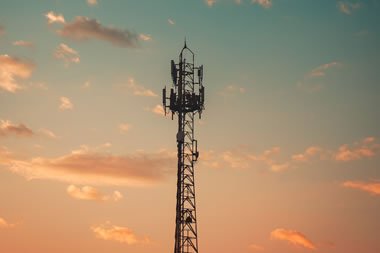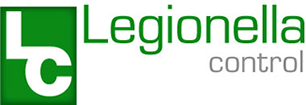Automated Temperature Monitoring for Legionella in Water

In this expert guide the specialists at Legionella Control International look at the benefits of remote or automated temperature monitoring used for the control of legionella in building water systems.
The guide considers why such water temperature monitoring is required, and how wireless technology could deliver significant cost, safety and environmental benefits to UK businesses, landlords and responsible managers.
A version of this story dealing with automated temperature monitoring first appeared in Legionella Control International’s newsletter. To get it in your inbox, sign up for free here.
Controlling legionella using water temperature
In the UK the control of hot and cold water temperatures in buildings is seen as the preferred method for controlling legionella and other waterborne pathogens.
Simply put, hot water needs to be kept hot, cold water cold… and the water needs to be kept moving.
To be effective, such an approach needs to be carefully monitored and the UK’s Health and Safety Executive in their ACOP L8 and HSG274 documents call for monthly temperature testing of both hot and cold water systems.
Currently, the majority of this testing is carried out manually, but there are significant opportunities for automation and that’s what we’ll consider here.
routine water testing offers significant opportunities for automation…
Automated temperature monitoring for legionella
There are several elements that can increase the chances of dangerous levels of Legionella bacteria building up in a water system.
One of the most familiar to many is the temperature of both the hot and cold water supplies.
If the water used in a building is permitted, by accident or design, to sit between 20-45 degrees Celsius, legionella and other potentially dangerous bacteria can breed and spread through the water system to grow out of control.
Regular temperature monitoring of a water system is an important part of making sure the water temperatures stay within a safe range.
If the water temperature drops below 20 degrees Celsius, the bacteria become dormant and cannot cause harm… and if it rises above 60 degrees Celsius, the bacteria are killed.
Could remote temperature monitoring for legionella soon become easier to achieve?
Those who are responsible for ensuring a water system is safe to use will know the importance of regularly monitoring the hot and cold water temperatures at several outlets within the facilities under their control, typically these would be the sentinel outlets.
In fact, water temperature monitoring is a practice set out in the Health and Safety Executives ACOP L8 and HSG274 code and guidance documents.
Monitoring and controlling water temperatures in this way ensures there is less chance of the Legionella bacteria being able to multiply to dangerous levels in warm water to cause harm to people.
However, it is now far easier to keep an eye on the temperature of the water in any water system, in any building, thanks to an innovative new automated temperature monitoring technology aimed specifically at improving the control of legionella in buildings.
Introducing automated water temperature monitoring for legionella
This is as promising as it sounds… the idea is that the water temperatures can be automatically monitored using the Internet and wireless technology built specifically for this purpose, rather than relying on landlords or technicians (people) to physically be present to conduct regular manual temperature checks of the water.
This makes it ideal for the remote monitoring of water temperatures in buildings that are geographically dispersed or difficult to access, on large property portfolios, or inside large and complex buildings such as hospitals, universities, hotels etc.
The benefits of wireless temperature monitoring for legionella
This new automatic water temperature monitoring technology delivers several advantages:
- It’s ideal for complex; remote and multi-site property portfolios as once installed and commissioned the system runs automatically.
- It removes the need for individuals to access then test water temperatures monthly, everything is done automatically.
- It allows for water testing in multiple parts of the system, thereby removing the limitations of testing conducted by humans.
- It uses devices that attach to the pipes within the water system – once attached, they need not be checked.
- It gives a better and fuller picture of how the water system is performing in real time allowing problems to be identified and dealt with quickly.
- If the water temperatures should fall into the danger zone – cold water rising above 20 degrees Celsius, and hot water falling below 50 (55 in healthcare), an alert is sent to the landlord, technician or responsible person so action can be taken.
- The wireless temperature monitoring technology allows for automated readings to take place (as frequently as every 10 seconds if required) allowing real time monitoring.
- The system can be set to highlight all flushing events to check regular flushing of little used outlets occurs.
- Automatic timestamps are created when a temperature change starts and finishes – identifying if an asset reaches the specified temperature.
- All data is automatically collected and stored securely in the cloud and can be easily downloaded. Graphs can also be downloaded as JPEG or PDF.
- Monthly reporting and risk scorecards broken down site by site can be set-up to highlight problem sites or buildings that require further investigation.
- Improves environmental performance by reducing number of site visits.
It’s clear such an automated temperature monitoring system would be a huge advantage for anyone responsible for maintaining the safety of the hot and cold water in their building.
It removes the need for manual testing and recording that could easily be incorrectly done.
The frequency of the water testing is good too – no technician would be able to test every 10 seconds.
All this means multiple parts of the same water system could be monitored throughout the day and night.
If an out of specification temperature occurred for just a short period, it might be missed by regular manual checks… however, it wouldn’t get past this new technology though.
If you’d like to learn more about how remote temperature monitoring could help your business call one of our specialists on 0330 223 36 86 or contact us here … contact
How long might it be before we see this automatic temperature monitoring technology in common use?
The good news is that this remote temperature monitoring technology is available now and is already contributing to the fight against legionella and other waterborne bacteria, helping property owners and businesses to maintain safe water systems.
The larger and more complex a water system is, the more likely it is the maintenance of the system is going to be equally complex.
Rather than organising who is going to test the water, how often, and where the tests should take place, this wireless monitoring system could be installed throughout and then used as a barometer of how safe the water temperatures are.
The speed of an alert of the water moving into the danger zone is the most impressive thing about this system.
Even if manual water temperature monitoring takes place regularly, a raised temperature may not be noticed or highlighted for several days or more.
This would give Legionella bacteria a chance to colonise part of a water system, potentially causing harm to those nearby.
Improving legionella risk management by automatically monitoring water temperatures
It’s true to say that well-managed water systems tend not to be at the centre of legionella outbreaks.
However, reducing risk is something all landlords, businesses and managers responsible for safe water systems should be taking care of.
By installing this automated temperature monitoring system – which is suitable for systems from the smallest and simplest to the largest and most complex – it gives those in charge more confidence that things are under control.
Water temperature is one of the key factors to consider when maintaining the safety of any water system, especially from legionella.
Being alerted to an immediate out of specification water temperature would ensure those in charge could identify the issue and resolve it as quickly as possible.
In the past, such shifts in water temperature may have led to the dangerous growth of Legionella bacteria and an outbreak of Legionnaires’ disease.
In the future, businesses, buildings and facilities using our remote water temperature monitoring technology can be confident they will not be at the root of the next outbreak.
We may soon see a reduction in outbreaks thanks to wireless monitoring technology like this.
In the world of Legionella bacteria, prevention is always better than cure – especially as a cure is not always possible to achieve.
We look forward to seeing the widespread roll-out of this automated temperature monitoring technology for the control of legionella and other waterborne pathogens as it becomes more widely adopted throughout the UK.
Legionella control water safety specialists
Our teams of legionella and water safety specialists support those responsible for the control of legionella helping them to protect people and meet their health and safety obligations in this specialist area.
If you would like to learn more about how remote temperature monitoring for legionella in water could improve safety, reduce costs and support environmental improvements in your business please contact us today on 330 223 36 86 or contact us here … contact
We also deliver professional water safety risk assessments for legionella, pseudomonas and other waterborne pathogens, water testing, independent compliance auditing, City & Guilds training and other environmental risk management services that help keep staff and others safe.


